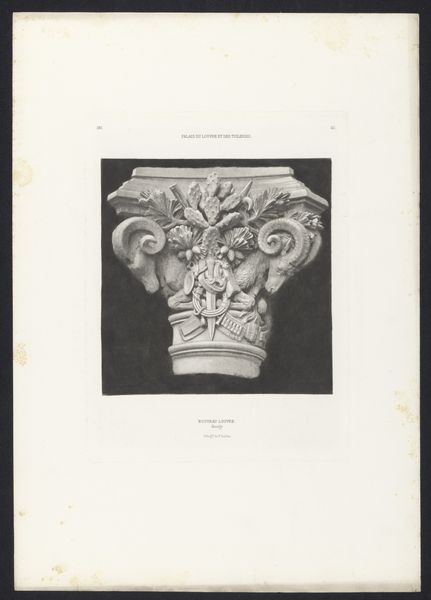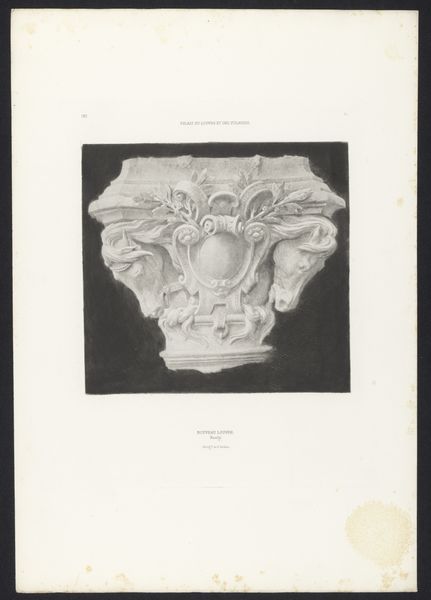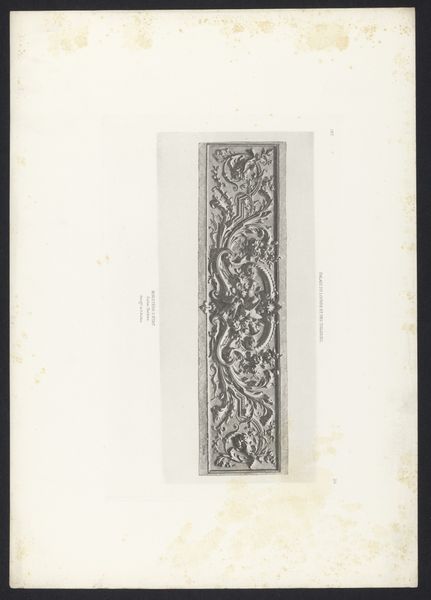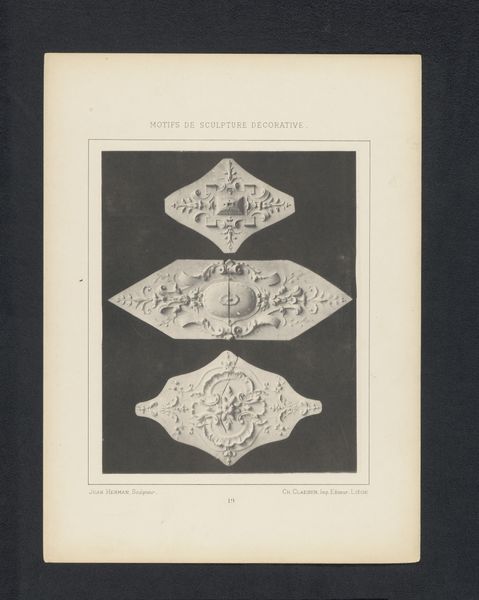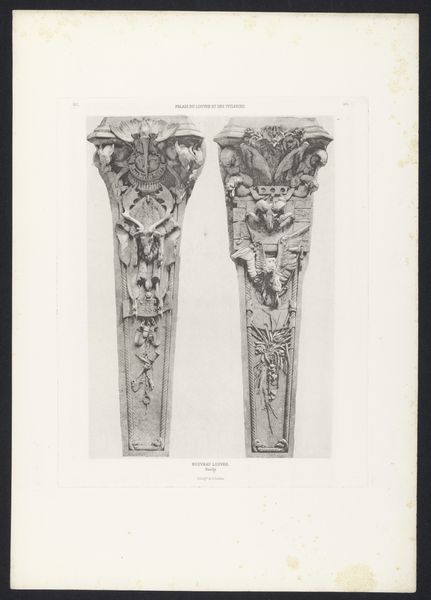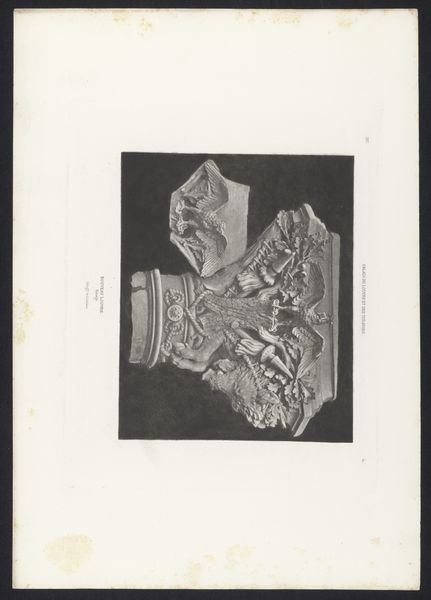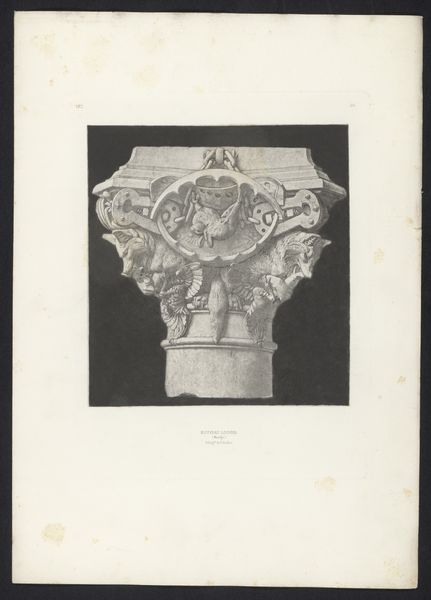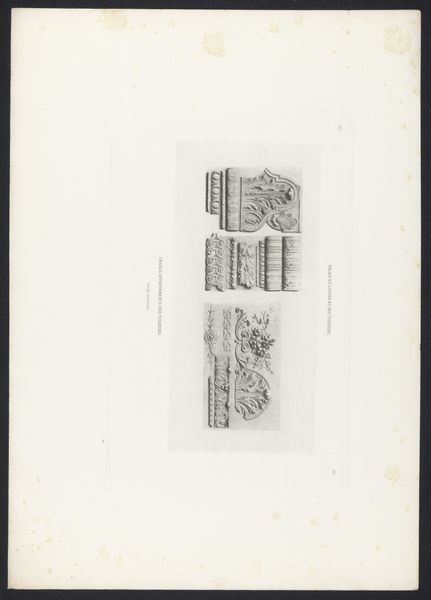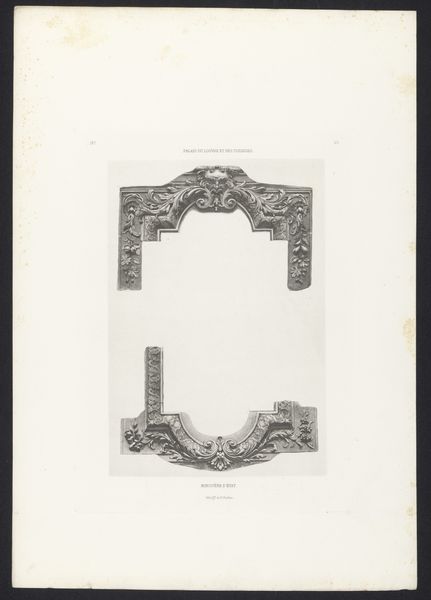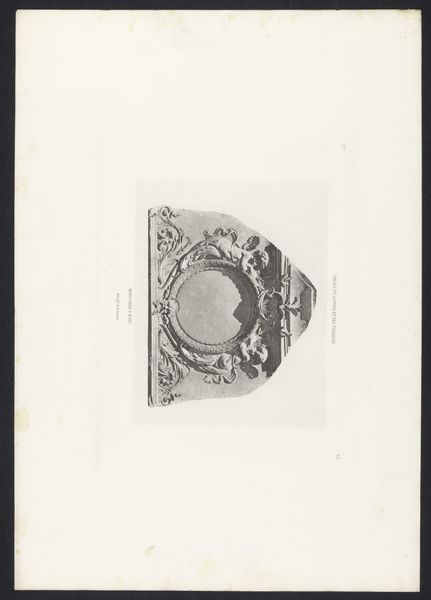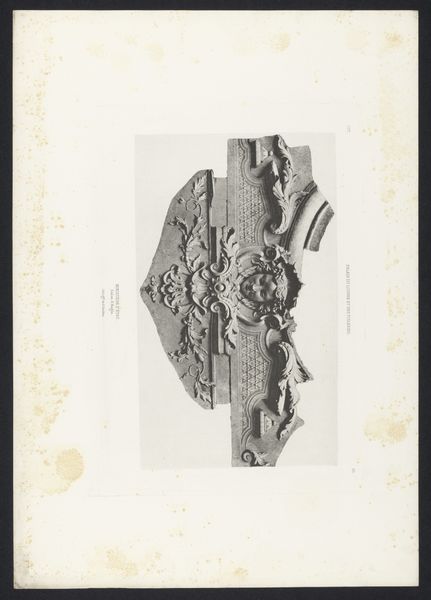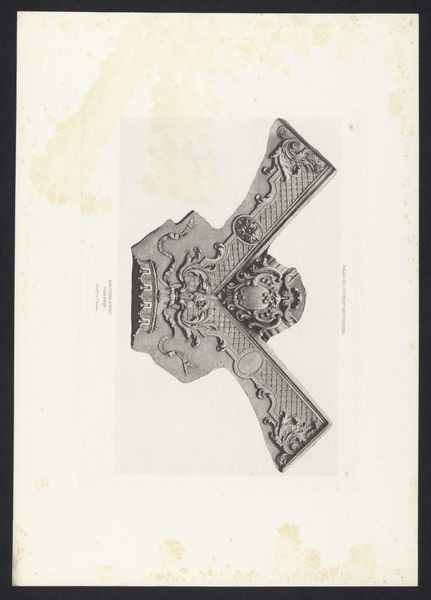
Ornamenten van de trap van de bibliotheek (vermoedelijk) van het Palais des Tuileries te Parijs before 1870
0:00
0:00
Dimensions: height 191 mm, width 193 mm
Copyright: Rijks Museum: Open Domain
Editor: Here we have "Ornamenten van de trap van de bibliotheek (vermoedelijk) van het Palais des Tuileries te Parijs" (Ornaments from the Staircase of the Library, supposedly of the Tuileries Palace in Paris) made before 1870 by Edouard Baldus, a photographic print of engravings on architectural ornaments. What strikes me is the stark contrast between the classical details and what feels like a fragmentary, almost archaeological presentation. What catches your eye in this work? Curator: The composition directs our focus immediately to the interplay of light and shadow that defines the forms. Note how the photographer Baldus captures the texture and volume of each fragment. The use of dark background further accentuates the three-dimensionality. Consider the formal relationships between the upper and lower fragments: similar motifs, yet distinct in their individual articulation. Are we to assume these differences are purely representational, or perhaps suggestive of different positions within the palace? Editor: That's interesting; the arrangement within the frame makes them appear like studies. Is there a particular reason why Baldus would isolate and highlight these specific ornamental details, removing them from their architectural context? Curator: Precisely. The very act of isolating these fragments calls our attention to their intrinsic properties, which could represent power, privilege, and permanence, especially considering Neoclassical architecture revivals in the 19th century. By employing a frontal, almost clinical approach, Baldus prompts us to engage with these classical forms on a purely aesthetic level. Are there signs of wear on the surfaces of the ornaments? Editor: Now that you mention it, there are minor cracks and abrasions, signs of age... the material itself gains importance, contrasting the aspiration of timeless beauty from Neoclassicism. Curator: A crucial observation. Perhaps the goal is not merely representation, but an inquiry into the complex interplay between form and time itself. The surface communicates this artwork, and it is the access into it. Editor: I hadn't considered that. Looking at how the formal elements convey multiple dimensions through time, rather than the single reading that the architectural context promotes, shifts my perspective on it. Curator: Indeed, Baldus provides a unique glimpse that expands our comprehension of classical ornament through photographic artistry.
Comments
No comments
Be the first to comment and join the conversation on the ultimate creative platform.
